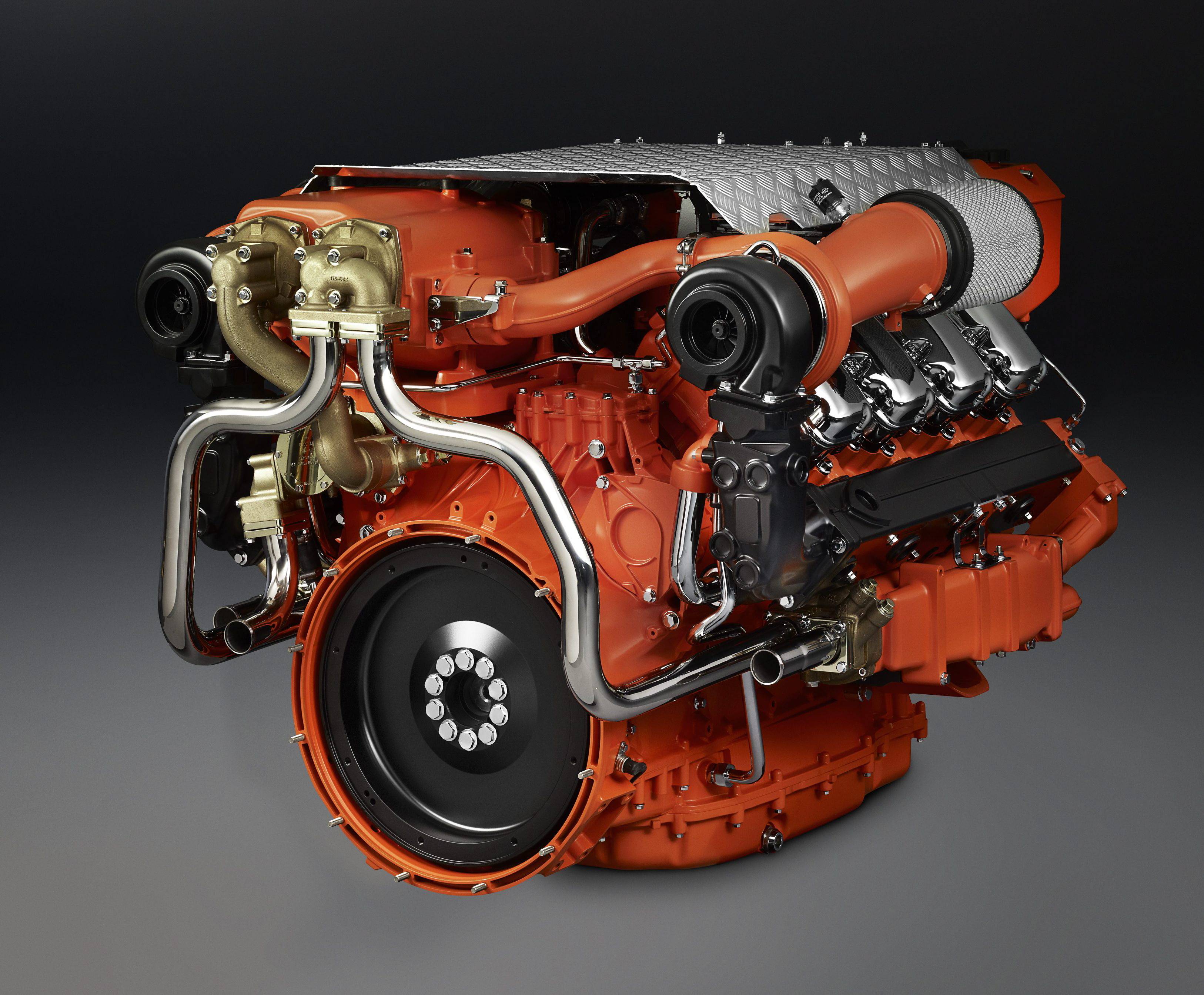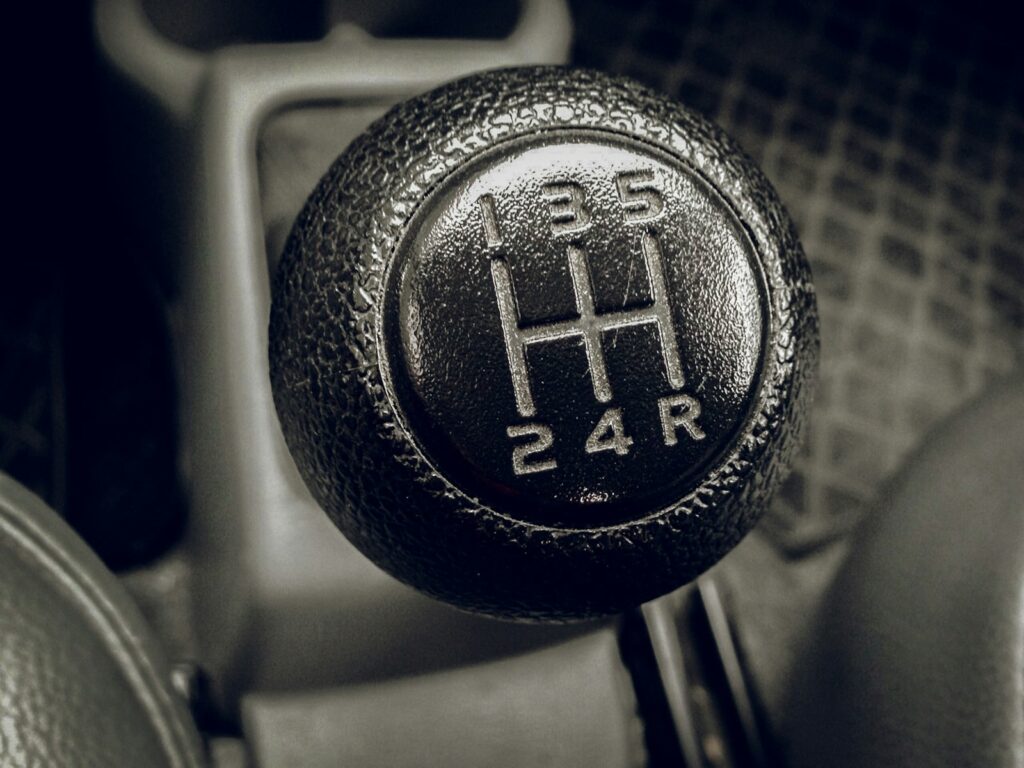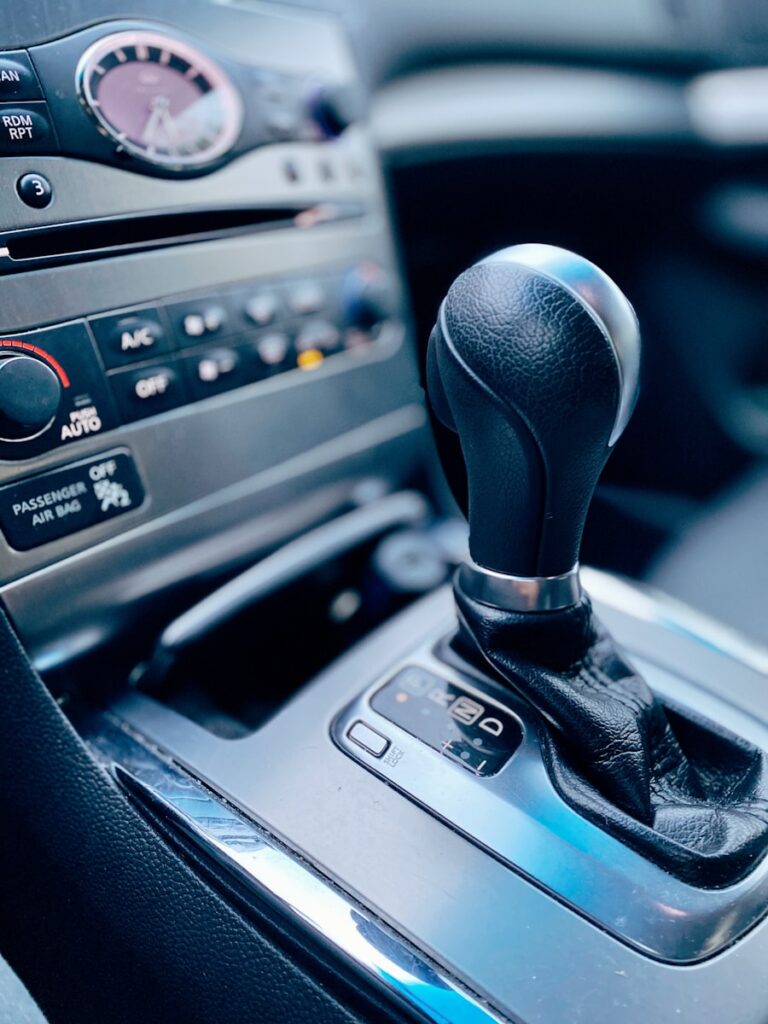Your car’s transmission is one of its most vital components, second only to the engine in keeping your wheels rolling smoothly. It’s the complex system that manages gear ratios, optimizing performance, fuel efficiency, and drivability across all conditions. When this crucial system starts to falter, it can turn your daily commute into a nightmare, potentially leaving you stranded at the worst possible moment.
Ignoring transmission issues isn’t just an inconvenience; it can be a “potential bank-breaker,” with repair costs often ranging from $4,000 to $8,000 for a major replacement. Catching these problems early, however, can mean the difference between a minor service, costing perhaps $150–$400, and that wallet-draining overhaul. By recognizing the subtle (and not-so-subtle) warning signs, you can be proactive about your vehicle’s health and save yourself a significant amount of money and stress.
This comprehensive guide is designed to empower you with the knowledge to spot the most common indicators that your transmission might be in trouble. We’ll explore everything from noticeable changes in how your car shifts to strange noises and fluid issues. Paying attention to how your car shifts, sounds, and smells can often help you catch small issues before they snowball into a complete transmission failure, ensuring a safer and smoother ride for years to come.

1. **Your Car Struggles to Shift Gears or Won’t Respond**One of the most obvious red flags that your transmission is in trouble is difficulty changing gears. This symptom can manifest in several ways, such as a noticeable delay when you try to move into Drive or Reverse, or the shifter itself feeling stiff and unwilling to budge. In some cases, you might press the gas pedal, and the car hesitates significantly before responding, struggling to get into the correct gear.
For those who drive a manual transmission, this can mean the transmission refuses to engage a gear when you depress the clutch pedal and attempt to move the stick shifter. This issue might occur when you’re trying to move into first gear from a complete stop or at any point while shifting gears. Whether automatic or manual, gear changes should always feel smooth, and any deviation from this norm is a clear sign to investigate.
Common culprits behind struggling or unresponsive shifts often include low or dirty transmission fluid, which interferes with smooth operation and prevents proper shifting. Clogged filters, worn transmission components, or problems with the hydraulic pressure systems can also be to blame. In manual cars, issues with the shift cables or clutch linkage might be the cause, or in more severe scenarios, the transmission itself may need a rebuild. Addressing these “Slow or Jerky Gear Changes” early is crucial, as 43% of transmission issues reportedly begin with shifting problems.
When your car hesitates to go into “park” or “drive,” or if the engine revs up after shifting but the car doesn’t move as quickly, it’s a clear indication that attention is needed. Low fluid levels cause a decrease in hydraulic pressure, leading to these delays or rough shifts. Faulty shift solenoids in automatic transmissions, which control fluid flow during shifts, are another frequent cause. Continuing to drive with these symptoms can quickly escalate to more expensive repair jobs, so it’s wise to seek professional help promptly.
Read more about: Decoding Your Drive: 14 Essential Transmission Warning Signs Every Driver Needs to Know

2. **The Engine Revs but the Car Doesn’t Move (Slipping Gears)**Imagine this scenario: you press the accelerator, and the engine roars to life, but your car barely moves, or worse, it lurches unpredictably. This phenomenon is known as gear slippage, and it’s a critical warning sign. It often feels as if the car has lost traction, even on dry pavement, indicating that the transmission is failing to effectively transfer power from the engine to the wheels. This is particularly unnerving and dangerous because gears can disengage unexpectedly while you’re driving, posing a serious safety risk.
In a healthy transmission, your car stays in the gear you or the computer designates until a gear shift is initiated. However, with slipping gears, the car can spontaneously pop out of gear, and in manual transmissions, it might even force the stick back into neutral. This “slipping transmission” is unsettling at best and dangerous at worst, especially when you need responsive power, like accelerating to avoid a hazard.
If you find yourself flooring the gas pedal, witnessing the RPMs rise dramatically, yet the car isn’t gaining speed proportionally, then you definitely have a slipping transmission. This signifies that your automatic transmission is struggling to engage the correct gear, and its speed isn’t matching the engine’s output. Unfortunately, this isn’t typically a simple or cheap repair, as worn clutches, torque converter failure, low fluid, or extensive internal transmission wear are common culprits.
Internal transmission wear or broken transmission bands are often the main culprits for this serious issue. To properly fix such a problem, mechanics often have to strip out the entire transmission, which is a major job. Early detection is key, as ignoring gear slippage can lead to complete loss of vehicle control and significantly higher repair costs down the line. If it happens, you know it’s time to have your transmission system examined immediately.

3. **Your Car Jerks, Shakes, or Vibrates When It Shifts**Smooth gear shifts are something most drivers take for granted until they’re gone. If your vehicle begins to shudder, jerk, or vibrate noticeably when changing gears, it’s usually a clear indicator that the transmission is struggling. These physical sensations can make your ride uncomfortable and are a strong signal that something is amiss within the transmission system.
Beyond just gear changes, a failing transmission frequently produces noticeable vibrations during general operation. If your ride’s transmission is acting up, you may also notice these shakes or vibrations getting heavier or more pronounced. This could range from a subtle trembling to a more violent shaking, making the driving experience far from smooth.
Several issues can cause your car to jerk, shake, or vibrate. Low transmission fluid is a common factor, as it can disrupt the hydraulic pressure needed for smooth engagement. Failing solenoids in automatic transmissions, which regulate fluid flow, or a worn clutch in manual cars, are also frequent causes. More severe internal wear inside the transmission, damaged transmission mounts, or even issues with your constant velocity (CV) joints can also contribute to these jarring sensations. These physical symptoms often worsen gradually, making early detection and intervention critical to preventing complete transmission failure and the associated expensive repairs.
4. **Unusual Sounds While Driving or Using the Clutch**While cars naturally make a variety of sounds, you quickly learn to recognize when something feels—or sounds—off. Strange noises coming from your vehicle should never be ignored, as they could be your transmission crying for help. Keep your ears open for any whining, humming, buzzing, or distinct clunking while driving, or even when your vehicle is in Neutral; these often signal transmission trouble.
For drivers of manual cars, you might notice grinding or squealing sounds specifically when pressing the clutch pedal or attempting to shift gears. This grinding can be particularly alarming and is a direct indication of a problem. Different sounds point to different potential issues: whining, humming, or slight buzzing in an automatic transmission may indicate internal problems, while a clunking sound, especially when shifting gears, demands immediate professional attention.
The sources of these unusual noises are varied. Low or contaminated transmission fluid can lead to a noisy transmission, as proper lubrication is compromised. Worn bearings, damaged synchronizers (especially in manuals), or a failing torque converter are common culprits. A worn clutch disc or linkage issues in manual cars can also produce grinding sounds. More serious issues such as valve body failure, worn planetary gears, or transmission pumps can result in persistent noise, even in neutral.
It’s important to differentiate: a clunking sound from underneath your vehicle might not always point solely to a transmission problem; your CV joints or differential could also be the cause. However, if lots of noise originates from the transmission while it’s in neutral, it could signal something more serious, like mechanical wear requiring parts replacement, such as a worn reverse idler gear or worn gear teeth. If the issue persists after checking fluid levels, it’s time to head to a workshop.
Read more about: Buyer’s Remorse on Wheels: The 15 Vehicles Owners Most Regret Driving Off the Lot
5. **You Spot Red, Pink, or Brown Fluid Under the Car**One of the most straightforward and easiest ways to identify that your transmission needs attention is by spotting a fluid leak. Transmission fluid is vital for your car’s shifting capabilities, so even a small puddle under your parked vehicle can quickly become a major problem if ignored. Fresh automatic transmission fluid is typically bright red, translucent, and has a slightly sweet smell.
As transmission fluid ages, it tends to turn brown, and if it’s burnt, it will have an acrid or distinctly burnt odor. Finding any color of fluid—red, pink, or brown—under your car is almost a sure sign of a leak. Unlike engine oil, your transmission should not consume or burn up any fluid during use. Therefore, if you notice your fluid levels are low, it’s highly probable that it’s leaking out somewhere, rather than being used up.
Common locations for transmission fluid leaks include the transmission pan gasket, cooler lines, and the input/output shaft seals. Debris in dirty fluid can also create pressure buildup that ultimately causes pipes to break, leading to leaks. For manual car drivers, leaks might also appear under your clutch or near your brake pedal. Checking your driveway for stains is a simple, proactive step that can save you significant trouble.
It’s crucial to address any transmission fluid leak promptly. Driving with low fluid levels causes severe internal damage as components lose proper lubrication and hydraulic pressure, potentially leading to complete transmission failure. Don’t continue to drive with the fluid dripping, as it can result in severe damage and may cost you a new transmission. Regular fluid level checks are a simple maintenance task that can prevent catastrophic failures and expensive repairs.
Read more about: Don’t Get Stuck: The 14 Most Common Reasons Your Car Fails State Inspection (and How to Ace It)
6. **You Smell Something Burning**That acrid, overheated odor emanating from your car is never a good sign, and if you smell something burning after a drive, your transmission could very well be the culprit. This symptom should always be taken with utmost seriousness because heat is a transmission’s worst enemy. Excessive heat can rapidly degrade the transmission’s internal components and fluid, leading to accelerated wear and eventual failure.
The most common cause for a burning smell is overheated or burnt transmission fluid. This can happen if the fluid level is too low, perhaps due to an undetected leak, causing the remaining fluid to work harder and overheat. Alternatively, the fluid might be old and expired, losing its lubricating and cooling properties over time. When transmission fluid starts to burn, it stops effectively lubricating the transmission’s many moving parts, which can quickly lead to the unit burning itself up.
Beyond just the fluid, leaks dripping transmission fluid onto hot engine or exhaust parts can also produce a burning smell. In manual transmissions, worn clutch material can generate significant heat and a distinct burning odor. It’s important to remember that while a burning smell often points to transmission issues, other components like a blown fuse, worn-out brake pads, or burning engine oil could also be the cause. However, if the smell accompanies any other transmission symptoms, it’s highly indicative of transmission trouble.
If you get a whiff of this burning, sweet-like smell, it’s a clear warning. Pull over safely immediately, as continuing to drive with an overheating transmission risks severe damage. Topping off your vehicle with new transmission fluid might offer a temporary fix if the fluid level is low, but seeking professional help is essential to diagnose the root cause and prevent further, more costly damage.
Read more about: Buyer Beware: 10 Electrical Gremlins That Can Plague Luxury Cars Before 50,000 Miles

7. **Your Car Loses Power or Struggles with Acceleration**If your car feels sluggish, struggles to accelerate, or loses steam when climbing hills, it could be more than just an engine issue; transmission problems often manifest as a lack of power reaching the wheels. When the engine revs up, but the vehicle doesn’t respond with corresponding acceleration, the transmission is failing to efficiently transfer power from the engine to where it’s needed most.
This loss of power can be particularly concerning when you’re trying to merge onto a highway or pass another vehicle, as it directly impacts your vehicle’s responsiveness and safety. The feeling of the engine working harder without the expected output indicates that the transmission isn’t performing its critical role in optimizing power delivery. When the system struggles to maintain optimal gear ratios, it means that the engine’s efforts are not being effectively converted into forward momentum.
Several underlying transmission issues can lead to poor acceleration or a noticeable loss of power. Gear slippage is a primary culprit, where the transmission fails to properly engage and hold the correct gear, causing the engine to rev freely without driving the wheels. A failing torque converter, which is responsible for transferring power from the engine to the transmission, can also drastically reduce the power available at the wheels. Problems with the transmission control module (TCM) or other forms of internal wear can also contribute to this sluggish performance.
When your engine revs without corresponding vehicle movement, or you experience difficulty reaching highway speeds, these are clear signs of internal mechanical problems or control system malfunctions within the transmission. It’s not just an inconvenience; it’s a symptom that suggests significant efficiency and performance issues, which, if ignored, can rapidly lead to more severe transmission failure and compromise your vehicle’s overall drivability and safety.
Navigating the complexities of your vehicle’s transmission can feel daunting, but being aware of its subtle cries for help is your superpower in preventing a breakdown. We’ve covered the immediate, unmistakable signs, but a transmission often offers more nuanced warnings that, when recognized, can save you from a complete failure and an empty wallet. These next indicators delve deeper into the system’s distress signals, from the silent alerts on your dashboard to the integrity of your transmission fluid and the advanced electronic glitches that can bring your ride to a halt.
It’s about staying one step ahead, understanding the critical messages your car is trying to send, and taking swift, informed action. This proactive approach not only safeguards your investment but also ensures you maintain a reliable and safe vehicle for all your journeys. Let’s continue our exploration of these crucial warning signs.
Read more about: Steer Clear: These 14 SUVs Often Become Costly Money Pits After 80,000 Miles, According to Expert Analysis

8. **Warning Lights Illuminate Your Dashboard**Modern vehicles are equipped with sophisticated diagnostic systems designed to be your car’s early warning network, and nowhere is this more critical than with your transmission. If you see the Check Engine light, a dedicated Transmission Temperature warning, or even an Overdrive light flicker or stay illuminated, your car is actively trying to tell you something important. These aren’t just minor glitches; combined with any drivability issues, they often point directly to transmission problems that demand your attention.
These warning lights aren’t always a one-to-one diagnosis, however. A Check Engine light can illuminate for numerous reasons, from a loose gas cap to a complex engine malfunction. To truly understand if the transmission is the culprit, a diagnostic scan tool becomes invaluable. This tool plugs into your car’s OBD-II port, typically found under the driver’s side of the dashboard, and displays specific error codes. These codes correspond to the vehicle’s problem area, offering a clearer picture than the general warning light itself.
Early detection through these dashboard alerts provides a critical opportunity to intervene before minor issues spiral into major failures. For instance, diagnostic codes like P0700 for a transmission control system malfunction, P0715 for an input/turbine speed sensor circuit error, or P0720 for an output speed sensor circuit issue can guide you or your mechanic to the exact problem. Ignoring these illuminated warnings is akin to ignoring a smoke detector; it significantly increases the risk of a catastrophic event down the road.
Whether your car uses a large screen to display detailed warnings or relies on the classic Check Engine light, any illuminated alert related to the powertrain or transmission should trigger an immediate investigation. Faulty sensors, overheating, or even internal component failures like a struggling torque converter can all cause these lights to appear. Taking these signals seriously is your first line of defense against costly repairs and unexpected breakdowns.
Read more about: Navigating the Minivan Maze: The 11 Most Resilient and Least Dependable Models for Families
9. **Your Manual Transmission Has a Slipping or Dragging Clutch**For those who cherish the control of a stick shift, a slipping or dragging clutch is a particularly unsettling and dangerous warning sign. This specific issue arises when the clutch disk fails to fully disengage from the flywheel, even after you’ve pressed the clutch pedal all the way down. The engine’s power continues to transfer, albeit improperly, to the transmission, creating a harrowing experience when you attempt to shift gears.
The immediate feedback for a dragging clutch is an unmistakable grinding noise that erupts the moment you try to move the shifter. Because the clutch isn’t fully separated, the gears within the transmission are still spinning, clashing with each other as you attempt to engage a new ratio. This not only makes shifting incredibly difficult but also causes rapid wear to the transmission’s internal components, especially the synchronizers.
One bit of good news is that the most common causes for a dragging clutch are often less severe and less expensive to fix compared to other transmission failures. Frequently, the problem can be traced back to too much slack in the clutch pedal’s cable or linkage. When there isn’t enough free play, the system lacks the leverage needed to properly disengage the clutch disk from the flywheel or pressure plate. This simple adjustment can often resolve the issue, saving you from more extensive repairs.
However, a slipping clutch can also be indicative of more serious internal wear, such as a worn-out clutch disc itself, requiring replacement. While less common, hydraulic issues within the clutch master or slave cylinders can also prevent proper disengagement. Timely diagnosis of a slipping or dragging clutch is essential to preserve the life of your transmission and ensure safe, smooth gear changes in your manual vehicle.
Read more about: Decoding Your Drive: 14 Essential Transmission Warning Signs Every Driver Needs to Know

10. **You Observe Strange Transmission Fluid Quality**Beyond simply checking the fluid level or noting a leak, the actual *quality* and appearance of your transmission fluid can be a profound indicator of internal health. You might find the fluid under your car to be dark and thick, but a truly problematic sign is seeing it with a milky appearance, or worse, observing contaminants like metal shavings and black particles floating within. These visual cues are not just minor abnormalities; they are definitive signs of severe wear and tear inside your transmission.
Fresh automatic transmission fluid is typically a vibrant, translucent red or pink, possessing a slightly sweet smell. As it ages, it naturally darkens to a brown hue, which, while indicating it’s time for a change, isn’t immediately catastrophic. However, if the fluid takes on an acrid, distinctly burnt odor, it signals that the fluid has overheated and lost its crucial lubricating properties. This burnt fluid can no longer protect the transmission’s intricate components, leading to accelerated wear and potentially irreversible damage.
Contaminated fluid, especially with metallic particles, means that parts within the transmission are grinding against each other and disintegrating. These shavings circulate throughout the system, acting like sandpaper and exacerbating the wear on bearings, gears, and clutches. A milky appearance, on the other hand, often points to water contamination, which can lead to corrosion and significantly degrade the fluid’s ability to lubricate and transfer hydraulic pressure.
Maintaining proper fluid quality is paramount to your transmission’s longevity. Using the wrong type of automatic transmission fluid, or neglecting regular fluid changes as per your manufacturer’s specifications, can lead to a host of problems including shifting difficulties, seal damage, and even complete system failure. A routine check of your transmission fluid’s color, smell, and clarity can provide invaluable insights, preventing minor issues from escalating into major, budget-draining overhauls.
Read more about: Hybrid Car Battery Woes: An In-Depth Guide for Savvy Owners to Avoid Thousands in Repairs

11. **Your Car Enters “Limp Mode”**Discovering your vehicle has entered “limp mode” is a prominent and unmistakable sign of serious transmission trouble, or indeed, other critical system failures. This isn’t just a minor malfunction; limp mode is a protective mechanism deliberately activated by your car’s computer to prevent the engine and transmission from incurring further damage when it detects a significant issue. It’s the automotive equivalent of a forced safe shutdown, severely limiting your vehicle’s capabilities to get you to safety.
When your car goes into limp mode, you’ll immediately notice a dramatic reduction in engine power, and the transmission will typically become stuck in a single, higher gear, usually second or third. This significantly limits your speed and acceleration, often capping your maximum speed at around 30-45 mph. The engine’s RPM will also be reduced, all designed to minimize stress and wear on vital components until the underlying problem can be diagnosed and fixed.
Various issues can trigger limp mode, including faulty sensors that send incorrect data to the Transmission Control Module (TCM), problems with control valves, or other critical malfunctions within the engine or transmission system. The car’s computer determines that continuing normal operation would risk severe, permanent damage, thus engaging this protective state. It’s a clear signal that your car’s internal systems are struggling and require immediate professional attention.
While limp mode can be an inconvenience, it’s ultimately a safeguard. It allows you to cautiously drive your vehicle to a service center rather than being stranded entirely or causing irreparable harm. If your car suddenly feels sluggish, refuses to shift gears normally, and you notice a significant power reduction, check for dashboard warnings and assume limp mode has been activated. Consulting a professional mechanic for an accurate diagnosis and repair is imperative to restore your car’s full functionality and prevent more severe consequences.
Read more about: Decoding Your Drive: 14 Essential Transmission Warning Signs Every Driver Needs to Know

12. **You Experience a Drop in Gas Mileage**While many factors can influence your vehicle’s fuel economy, a sudden and unexplained dip in gas mileage can be a subtle yet critical warning sign originating from your transmission. The transmission’s fundamental role is to efficiently deliver power from the engine to the wheels by maintaining optimal gear ratios. When this system begins to falter, it struggles to perform its job effectively, directly impacting your fuel efficiency.
A failing transmission might manifest this symptom in several ways. If components like the torque converter are not operating correctly, they can prevent the engine from efficiently transferring its power to the wheels. This inefficiency forces the engine to work harder, consuming more fuel to produce the same amount of power or to maintain a given speed. Essentially, your engine is expending energy that isn’t being properly converted into forward momentum, leading to wasted fuel.
Furthermore, issues such as slipping clutches, incorrect shift timing, or other internal performance problems within the transmission can directly contribute to decreased gas mileage. When the transmission struggles to engage the correct gear or shifts improperly, the engine operates outside its most efficient RPM range, leading to higher fuel consumption. This can be a more insidious warning sign because it often develops gradually, making it easy to overlook until the problem becomes more severe.
Monitoring your fuel economy regularly can serve as an early detection method for transmission issues. If you notice a consistent and significant drop in the number of miles you’re getting per gallon without a change in your driving habits or external conditions, it’s worth investigating. While other factors like tire pressure or engine problems can also affect gas mileage, if it coincides with any other subtle transmission symptoms, it strongly suggests your transmission’s efficiency is compromised and warrants a professional inspection.
Read more about: Your Ultimate Guide: 14 Critical Car Rental Mistakes Abroad (And How to Dodge Them!)
13. **The Shifter Physically Pops Out of Gear**For drivers of manual transmission vehicles, one of the most disconcerting and potentially dangerous transmission warnings is when the shifter spontaneously pops out of gear and reverts to neutral. This isn’t merely a struggle to engage a gear; it’s a physical disengagement of the transmission from the chosen ratio, abruptly cutting power to the wheels. What might start as an occasional occurrence can quickly become a persistent and hazardous problem, especially when driving at speed or under load.
This issue effectively ends the “fun” of driving a stick shift, as it robs you of control and creates moments of panic. You might be cruising along, and suddenly, without any input from you, the gear stick springs back to its neutral position. This can be caused by various factors, some relatively minor and others indicative of significant internal damage.
Often, the culprits behind a popping shifter are worn mounts, loose linkages, or issues with the shifter bearings or a spring in the shift rail. These components are responsible for holding the gear selector firmly in place. If they are worn or damaged, they can lose their ability to secure the gear, allowing it to disengage under the vehicle’s vibration and torque. These external issues, while needing attention, are typically less costly to repair than internal transmission problems.
However, a popping shifter can also be a symptom of more severe internal transmission issues. Worn-out internal components, such as detents, synchros, or even damaged gear teeth, can lead to gears not holding properly. If the problem persists after checking and addressing external linkages, it’s a strong indication that the transmission’s internals are compromised. Ignoring this can lead to further damage, potentially requiring a complete transmission replacement, which is a bank-breaking repair. Immediate professional assessment is vital.

14. **You Hear Transmission Grinding Sounds During Shifts**While “unusual sounds” broadly covers a range of noises, a specific and particularly alarming symptom is the distinct sound of grinding during gear changes. This isn’t the general hum or whine of low fluid; it’s a harsh, mechanical grating that signals direct friction between metal components that should be smoothly engaging. This grinding is a clear warning that your transmission is in distress and requires immediate attention to prevent more catastrophic damage.
In a manual transmission, grinding often occurs when the synchronizers are worn out. Synchronizers are crucial components that match the speed of the gears before engagement, ensuring smooth, silent shifts. When they fail, the gear teeth literally grind against each other as you attempt to shift, producing that terrible noise. Similarly, if the bearings that support the gears and shafts are worn or broken, or if the gear teeth themselves are damaged, you’ll hear that unmistakable grinding sound every time a shift is attempted.
For automatic transmissions, while less common for a distinct grinding *during shifts* in the same way as a manual, similar harsh metallic sounds can occur if there’s significant internal wear, such as worn planetary gears or a failing torque converter, especially during the moment of gear engagement. The improper clutch engagement, as mentioned in the context, is also a common reason for grinding, whether it’s a dragging clutch in a manual or issues with clutch packs in an automatic.
Hearing your transmission grind as you shift is more than just an annoyance; it’s a direct indicator of deteriorating internal components. Continuing to drive with these symptoms will only exacerbate the wear, turning what might be a repairable issue into a complete transmission overhaul. If you experience this specific grinding noise, especially coupled with difficulty shifting, it’s imperative to have your vehicle inspected by a qualified transmission specialist without delay.
Read more about: Buyer Beware: 8 Critical Brake Problems That Could Ground Your High-Mileage Sports Car Dreams Long Before 40,000 Miles

15. **Advanced Electronic Control Module (TCM) Malfunctions**In today’s sophisticated vehicles, the automatic transmission isn’t just a hydraulic and mechanical marvel; it’s also a highly intelligent electronic system, with the Transmission Control Module (TCM) acting as its brain. When this critical electronic component malfunctions, the consequences can be profound and far-reaching, leading to erratic shifting patterns, communication errors, and even complete system shutdowns. Understanding these advanced electronic warnings is crucial for maintaining your vehicle’s reliability.
The TCM processes data from numerous sensors—monitoring vehicle speed, throttle position, engine load, and fluid temperature—to ensure seamless and precise gear changes. When a TCM experiences problems, such as internal circuit failures or software glitches, it can disrupt this delicate balance. This can lead to unpredictable shifts, where your transmission might engage gears harshly, slip unexpectedly, or refuse to shift at all, making for a truly unreliable and unsafe driving experience.
Diagnostic codes specific to TCM failures are your most direct indicator of these advanced electronic issues. Codes like U0100 and U0101, signifying “Lost Communication with TCM,” point to wiring problems or a complete failure of the module itself. A P0700 code often flags a “faulty transmission computer module,” requiring professional diagnosis to pinpoint the exact nature of the repair needed. These codes are not mere suggestions; they are explicit messages from your car’s brain about a critical problem.
Vehicle-specific TCM problems are also common. For instance, some Mazda 3 and Mazda 5 models (2006-2014) notoriously suffered from TCM overheating due to their placement directly on the transmission case. Similarly, certain GM Allison transmissions in 2009-2015 Chevrolet and GMC trucks experienced issues with communication errors. Addressing these module-specific failures often requires specialized repair solutions, like those offered by experts in module rebuilding, to restore proper function without costly dealership replacements or complex reprogramming.
Recognizing these electronic control module issues through dashboard warnings and diagnostic codes empowers you to seek targeted, effective solutions. Prompt attention to TCM malfunctions ensures that the complex interplay between your engine and transmission remains harmonious, preventing major mechanical failures that often stem from improper electronic control.
Read more about: Steer Clear! 11 SUVs That Are Repair Bill Nightmares and Will Make You Wish for a Time Machine
Preventing a transmission failure isn’t just about saving money; it’s about safeguarding your vehicle’s reliability and your peace of mind. While the repair costs can be substantial, often ranging into the thousands, the key takeaway is that transmission problems rarely appear overnight. They whisper warnings long before they roar into a catastrophic breakdown. By paying close attention to how your car shifts, the sounds it makes, its fluid condition, and even the subtle alerts on your dashboard, you equip yourself with the knowledge to catch small issues before they snowball. Proactive maintenance, like regular fluid checks, and a quick response to any of these warning signs can extend your transmission’s life significantly, ensuring safer, smoother travels for years to come. Don’t wait for a breakdown to act; your transmission—and your wallet—will thank you.










